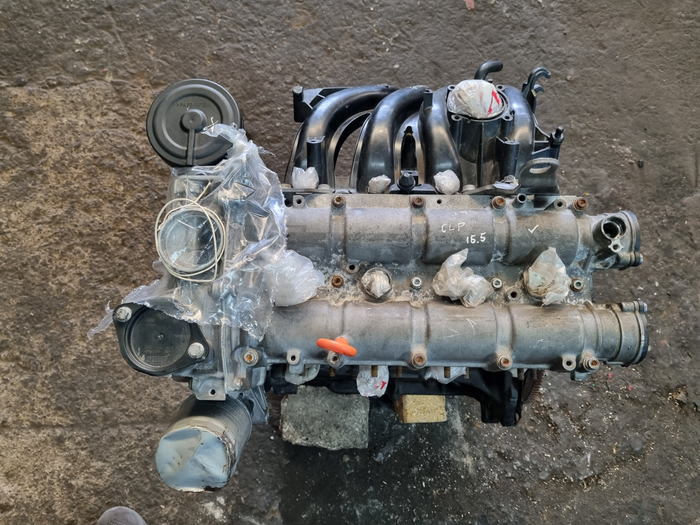Ensure long-term reliability with the right clp engine.
Ensure long-term reliability with the right clp engine.
Blog Article
The Role of a Clp Engine in Revolutionizing Engine Efficiency and Sustainability
The arrival of CLP engine modern technology presents a turning point in the automobile sector, where efficiency and sustainability converge in unmatched means. By optimizing combustion procedures and enabling dynamic modifications in compression proportions, these engines not just promise improved gas performance and reduced discharges yet additionally challenge conventional design standards. As the industry grapples with the pressing requirement for greener remedies, the implications of embracing CLP innovation expand far beyond plain performance metrics. What stays to be seen is exactly how these developments will reshape the future landscape of automobile design and environmental duty.
Understanding CLP Engine Modern Technology
As the automotive industry continually seeks cutting-edge options to improve effectiveness and performance, understanding CLP engine technology comes to be critical. The term CLP represents Compression-Low Stress, a sophisticated engine layout that concentrates on enhancing combustion processes and reducing emissions. This modern technology runs by preserving a low-pressure setting within the burning chamber, which assists in an extra full fuel burn and minimizes unburned hydrocarbons.
Among the crucial features of CLP engine innovation is its capability to change the compression proportion dynamically. This versatility allows the engine to run efficiently throughout various driving problems, enhancing gas economy while simultaneously enhancing power output. Furthermore, CLP engines leverage advanced products and design concepts to reduce weight and thermal losses, further adding to overall effectiveness.
Moreover, the combination of digital control systems plays a crucial duty in managing the engine's efficiency parameters. These systems allow real-time changes to ignition timing and fuel shot, optimizing combustion for both power and performance. By understanding CLP engine innovation, stakeholders in the auto sector can better value its potential in driving the future of engine style, efficiency, and sustainability.
Performance Enhancements Offered
CLP engine innovation provides significant performance improvements that set it besides conventional engine styles. Among the main advantages of CLP engines is their capacity to run efficiently across a wider variety of rates and lots. This flexibility translates into enhanced torque shipment and acceleration, supplying an extra receptive driving experience.
In addition, the innovative combustion process used in CLP engines enhances fuel-air blending, causing greater thermal efficiency. This enhancement not only optimizes power result yet additionally minimizes energy loss, resulting in an engine that does much better under different problems.
In addition, the modular architecture of CLP engines allows for simpler assimilation with crossbreed systems, amplifying their performance possibility - clp engine. This flexibility allows suppliers to make automobiles that deal with consumer demands without compromising agility or power
The accuracy engineering associated with CLP technology likewise adds to lower rubbing and wear, improving engine durability and reducing the regularity of upkeep. Generally, these efficiency enhancements setting CLP engines as a leading selection in the quest of high-performance, trustworthy, and flexible engine solutions.
Ecological Benefits of CLP Engines
One of the most engaging benefits of CLP engines hinges on their environmental benefits, which are significantly crucial in today's automotive landscape. These engines are designed to optimize gas effectiveness, dramatically lowering carbon emissions contrasted to traditional burning engines. By using innovative burning strategies and ingenious materials, CLP engines promote cleaner exhaust outputs, adding to improved air quality.
In addition, the reduction in fuel consumption not only causes decrease greenhouse gas exhausts yet additionally saves valuable natural deposits. As fossil gas reserves decrease, the shift towards CLP technology stands for a critical relocation in the direction of sustainability. The engines are usually compatible with different fuels, further improving their environmental charm and permitting a varied energy portfolio.
Moreover, the lightweight layout of CLP engines helps lower car weight, which subsequently reduces the check it out energy required for propulsion. This causes lower functional energy intake and a reduced environmental footprint. In summary, CLP engines stand at the center of initiatives to minimize environment modification and promote sustainable practices in the vehicle sector, embodying a future where efficiency and environmental obligation are not equally exclusive.
Contrast With Traditional Engines
While typical engines have long controlled the automotive market, the introduction of CLP innovation provides a substantial change in performance and performance. Standard interior burning engines mainly count on gas combustion, which not only restricts thermal efficiency but also adds to higher emissions. In contrast, CLP engines utilize advanced thermal administration and a distinct burning process, enhancing gas performance and dramatically decreasing greenhouse gas discharges.
In addition, standard engines operate fixed power contours, which can hinder efficiency in differing driving problems. CLP engines, nonetheless, are developed to adjust their efficiency dynamically, offering ideal power distribution based upon real-time needs. This adaptability results in enhanced acceleration, responsiveness, and total driving experience.
Maintenance also varies substantially; typical engines frequently call for constant oil adjustments and element substitutes as a result of damage. clp engine. CLP engines, with fewer relocating parts, promise reduced upkeep needs and longer operational lifespans

Future Prospects and Innovations
As the vehicle landscape advances, the future of engine technology is increasingly focused on technologies that boost performance and sustainability. The Clp engine, with its special architecture and functional effectiveness, is positioned to play a pivotal duty in this transformation. Future growths might include advancements in materials scientific research, enabling the building and construction of lighter and extra durable components, therefore decreasing total automobile weight and improving gas performance.
Additionally, the integration of fabricated knowledge and artificial intelligence right into engine monitoring systems is expected to maximize performance dynamically, permitting for real-time modifications based upon driving conditions. These innovations can better decrease discharges and improve power use.
In addition, study into different gas, consisting of hydrogen and biofuels, provides amazing opportunities for Clp go now engines, straightening efficiency with green efforts. clp engine. As regulative structures come to be more stringent, the fostering of such technologies will be crucial in achieving sustainability objectives without compromising power
Verdict

Report this page